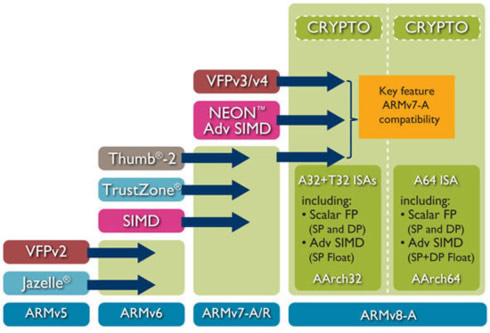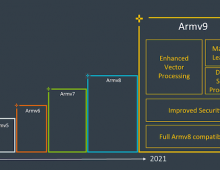
ARM Introduces Enhancements in ARMv8 Architecture
ARM is introducing a set of small scale enhancements to its widely adopted ARMv8.1-A architecture that could improve the security and speed of chips
ARMv8-A, the ARMv8 A-profile version of the ARM architecture, was first publically previewed in October 2011. Over the past two years, there have been a growing number of ARMv8-A announcements from ARM, such as its Cortex-A53 and Cortex-A57 products, plus additional cores and end-user devices from licensees and OEMs, including chips such as Apple’s A8 and also other for Android devices.
To allow the ARM ecosystem to manage the next stage of its evolution, ARM is introducing a set of small scale enhancements that are fully backwards compatible with the initial v8.0 architecture, and will be collectively known as ARMv8.1-A. These will start to appear in public specifications, software development tools, models and software support throughout 2015, with early adopter silicon expected in the latter part of 2015.

ARM says that the introduction of these enhancements into new cores will take several years, and some markets and use cases, such as mobile, are expected to see little benefit from these changes. This means that v8.0 will continue to be the architecture of choice for many new designs and most software development over the medium term, and that v8.1 will have a gradual affect across different market segments, starting with very large systems. Many of the changes will be transparent to the user, with operating systems such as Linux using runtime library selection or kernel patches to adapt where necessary.
The enhancements introduced with ARMv8.1 will include changes to the instruction set, the exception model and memory translation, according to ARM.
ARM currently has 57 ARMv8-A processor and architecture licenses, and more products like 64-bit Android tablets and smartphones are expected to appear in the coming years.
A summary of the ARMv8-A architecture can be downloaded from infocenter.arm.com.





















